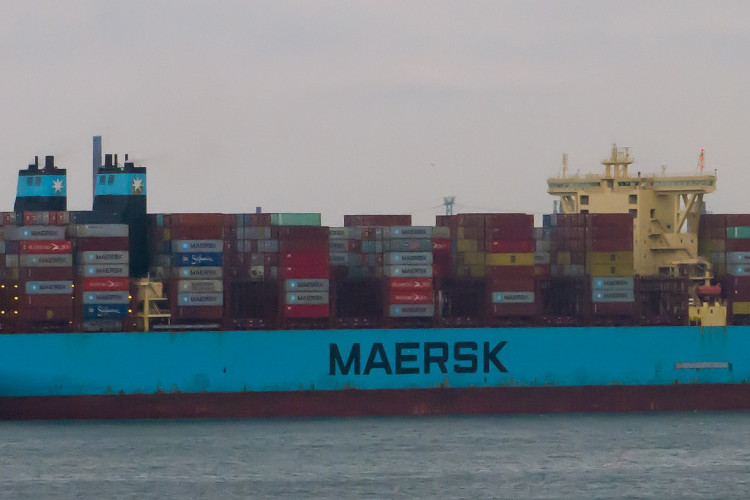The uncertain situation in the Red Sea continues to shape the world of global container shipping, with major shipping lines taking different approaches with regards to Asia-Europe routes. Meanwhile, the crisis is believed to have been a factor in the demise of Italian shipping firm Kalypso Compagnia di Navigazione, which is set to be liquidated.
To what extent are ships being routed through the Red Sea and the Suez Canal again? Throughout the crisis, renowned shipping expert Lars Jensen has been proving a near-running commentary on the impact of the Red Sea crisis.
Earlier today, Jensen noted that based on vessel movements, Maersk are the only large global container carrier that has fully committed to resuming a Suez routing.
Jensen added that CMA CGM also has a number of ships “aiming for that routing”. However, in the words of the Vespucci Maritime CEO, CMA CGM “do not appear fully committed the same way as Maersk is.”
“As of Sunday 24 December 2023, we have received confirmation that the previously announced multinational security initiative Operation Prosperity Guardian (OPG) has now been set up and deployed to allow maritime commerce to pass through the Red Sea / Gulf of Aden and once again return to using the Suez Canal as a gateway between Asia and Europe,” Maersk said in a statement issued on Sunday.
Hapag-Lloyd are among the sea liners still avoiding the Red Sea. The company’s live tracker shows this is still the case at the time of writing.
Yesterday, Hapag-Lloyd explained why it was continuing to send its vessels around Africa: “Following our latest Red Sea and Suez Canal update, the situation remains too dangerous to cross the Suez Canal and therefore we will maintain our diversion around the Cape of Good Hope. The safety of our crew is our first priority and we appreciate your understanding as we navigate through these circumstances.”
According to Lars Jensen, vessels that are going through the Red Sea are using AIS transponders to try to communicate to the Houthies. “ARMED GUARDS ONBOARD” and “VL NO CONTACT ISRAEL” are among the messages being sent.
Freight rates Reuters reports that this longer route is set to see liners fork out $1 million extra in fuel for every round trip between Asia and Northern Europe. Drewry estimates the extended route will add another 10-14 days to the journey.
The added cost associated with routing around Africa, as well as the cost of higher insurance for sailings through the Red Sea, means rates have inevitably increased. FreightOs’ China/East Asia – North Europe index, for example, increased from $1,243 on December 1st to $1,161 on December 22nd.
However, it is believed that a return through Suez will see rates fall again, something that is said to have been reason for a 5% fall in Maersk’s share price yesterday.
Israeli startup attempts to form landbridge from UAE and Bahrain to Egypt In another development sparked by the Red Sea crisis, Israeli firm Trucknet Enterprise says it has signed agreements to set up a landbridge for goods across Persian Gulf through Saudi Arabia and Jordan to Israel and Egypt.
Trucknet has stated that these agreements will see goods transported from the port of Dubai, through Saudi Arabia and Jordan to Israel. From there, cargo could be loaded back onto ships in the Mediterranean Sea or transported by truck to Egypt.
According to reports in Israel, a pilot to test the land transport line for trucks from the ports of Dubai to Israel has been ongoing in recent weeks.
Italian shipping company set up in 2021 to be liquidated Meanwhile, Italy’s Kalypso Compagnia di Navigazione, set up just over two years ago, has been described as the first company to become a victim of the Red Sea crisis.
Local media reports confirmed the company’s fate just before Christmas. It is nonetheless clear that the Kalypso’s woes started well before the situation in the Red Sea unfolded; the company’s debts quickly mounted up after the dramatic post-pandemic fall in freight rates. The shipping firm had only been set up in the first place on account of the sky high shipping rates seen during the pandemic.






